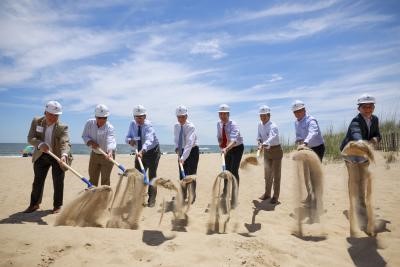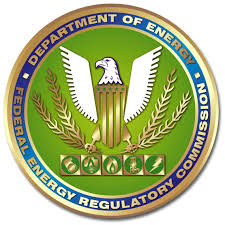
Dominion Energy has begun construction on the Coastal Virginia Offshore Wind (CVOW) project, which will feature two 6-MW wind turbines and power about 3,000 homes.
A July 1 groundbreaking attended by Governor Ralph Northam, other elected officials, stakeholders and media marked the beginning of onshore construction activities for the CVOW project.
The company is breaking ground to install a half-mile conduit, which will hold the final stretch of cables connecting the turbines, 27 miles off the coast of Virginia Beach, to a company substation near Camp Pendleton. This activity marks the first work at the project site.
“These onshore construction activities are another major milestone in our plan to bring offshore wind to the Commonwealth and are a sign of our commitment to bring more renewable energy to our customers,” said Dominion Energy Chairman, President and Chief Executive Officer Thomas F. Farrell, II.
The project, announced two years ago, is the only fully permitted offshore wind project in U.S. federal waters, Dominion Energy says. Last November, the State Corporation Commission approved the project, and the majority of required permits and approvals have been received.
Ørsted, an offshore wind developer headquartered in Denmark, has been contracted for the offshore portion of the project. The L. E. Myers Company will perform onshore construction work. Customers will see no increase in rates for the pilot project under the provisions of the Grid Transformation and Security Act of 2018, as the project will be recovered in existing base rates rather than a rider.
Dominion Energy says wind is part of a broader effortsybdzdrdtvdzrzczawsqzq to deliver renewable energy, including solar, as part of its commitment to reduce carbon emissions. The company anticipates $1.1 billion in offshore wind investments through 2023.
Dominion Energy is headquartered in Richmond, Va., and serves nearly 7.5 million customers in 18 states. The company expects to cut generating fleet carbon dioxide emissions 80% by 2050 and reduce methane emissions from its gas assets 50% by 2030.





